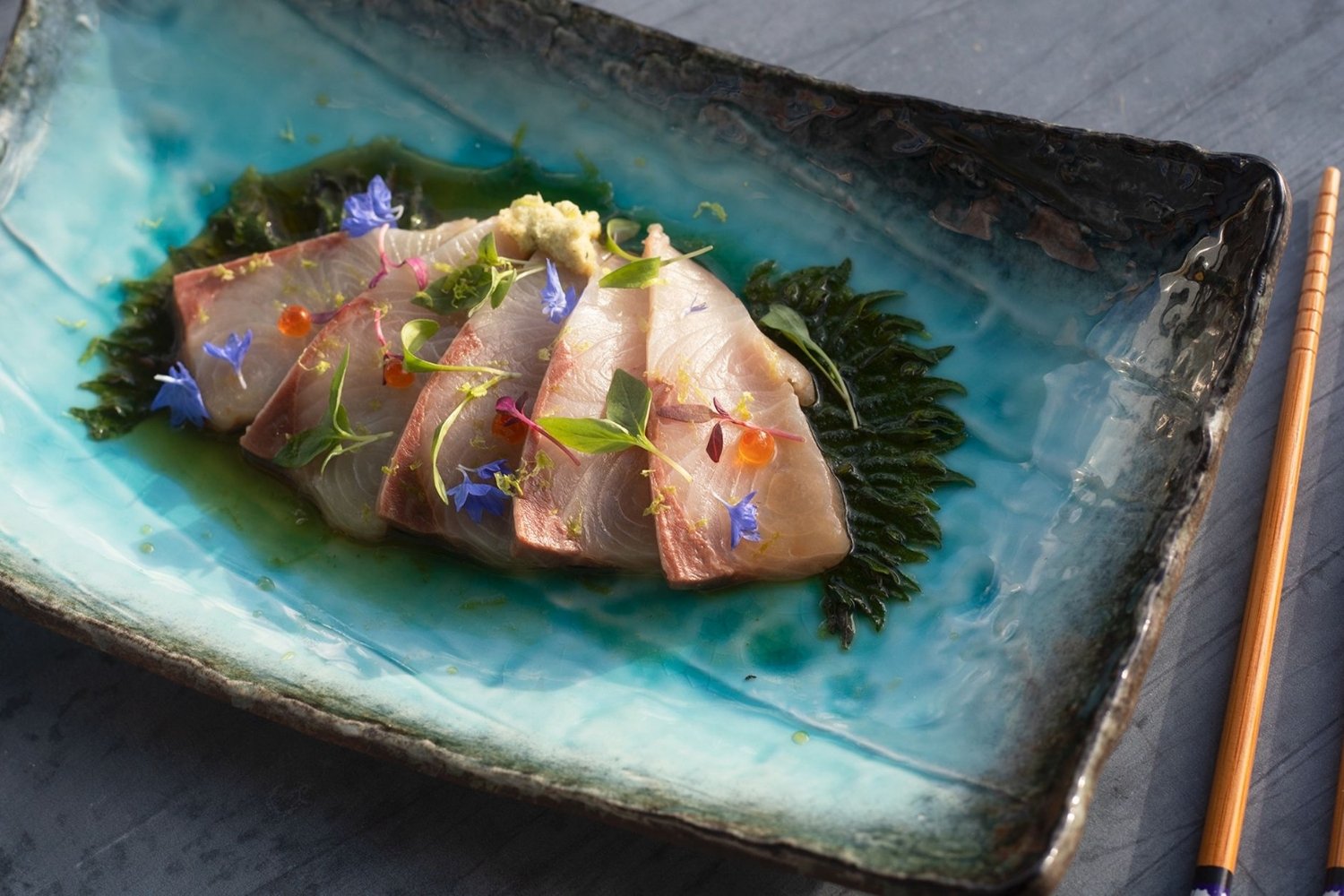
What is Hiramasa? Hiramasa, also known as Yellowtail Kingfish, is a prized fish in the culinary world. This fish is celebrated for its firm texture and mild, clean flavor. Native to the waters around Japan, Australia, and New Zealand, Hiramasa is a favorite among sushi chefs and seafood lovers alike. Its high oil content makes it perfect for sashimi, grilling, and even smoking. But there's more to this fish than just its taste. Hiramasa is also packed with nutrients like omega-3 fatty acids, which are great for heart health. Want to learn more about this fascinating fish? Keep reading to uncover 34 intriguing facts about Hiramasa!
What is Hiramasa?
Hiramasa, also known as Yellowtail Kingfish, is a prized fish in the culinary world. Known for its firm texture and rich flavor, this fish is a favorite among chefs and sushi enthusiasts alike. Let's dive into some fascinating facts about Hiramasa.
-
Scientific Name: The scientific name for Hiramasa is Seriola lalandi.
-
Family: Hiramasa belongs to the Carangidae family, which includes jacks and pompanos.
-
Habitat: These fish are typically found in the subtropical and temperate waters of the Pacific Ocean.
-
Size: Hiramasa can grow up to 1.8 meters in length and weigh as much as 70 kilograms.
-
Lifespan: They can live up to 12 years in the wild.
-
Diet: Hiramasa primarily feed on smaller fish, squid, and crustaceans.
Culinary Uses of Hiramasa
Hiramasa is not just any fish; it's a culinary delight. Its versatility in the kitchen makes it a favorite among chefs worldwide.
-
Sashimi: Hiramasa is often served as sashimi due to its firm texture and delicate flavor.
-
Sushi: It is also a popular choice for sushi, often paired with rice and seaweed.
-
Grilled: Grilling Hiramasa brings out its natural flavors, making it a popular dish in many cultures.
-
Ceviche: This fish is also used in ceviche, a dish where it is marinated in citrus juices.
-
Smoked: Smoked Hiramasa is a delicacy, offering a unique flavor profile.
-
Carpaccio: Thinly sliced Hiramasa, drizzled with olive oil and lemon juice, makes for an exquisite carpaccio.
Nutritional Benefits of Hiramasa
Hiramasa is not just tasty; it's also packed with nutrients that are beneficial for your health.
-
High in Protein: Hiramasa is an excellent source of high-quality protein.
-
Omega-3 Fatty Acids: It is rich in omega-3 fatty acids, which are good for heart health.
-
Low in Calories: This fish is relatively low in calories, making it a great option for those watching their weight.
-
Vitamins: Hiramasa is a good source of vitamins B6 and B12.
-
Minerals: It contains essential minerals like selenium and phosphorus.
-
Low in Mercury: Compared to other fish, Hiramasa has lower mercury levels, making it safer for regular consumption.
Hiramasa in Aquaculture
Aquaculture has become a significant source of Hiramasa, ensuring a steady supply without depleting wild populations.
-
Sustainable Farming: Many farms practice sustainable methods to raise Hiramasa.
-
Controlled Environment: These fish are raised in controlled environments to ensure quality and health.
-
Feed: They are fed a balanced diet to promote growth and health.
-
Disease Management: Farms use various methods to manage and prevent diseases among the fish.
-
Market Demand: The demand for farmed Hiramasa has been steadily increasing due to its culinary popularity.
Interesting Facts About Hiramasa
Beyond its culinary and nutritional benefits, Hiramasa has some intriguing aspects worth noting.
-
Fast Swimmers: Hiramasa are known for their speed, making them a challenging catch for anglers.
-
Migratory Patterns: These fish migrate long distances, often traveling between different regions.
-
Predators: Larger fish and marine mammals are natural predators of Hiramasa.
-
Reproduction: They spawn in open water, releasing eggs that float and hatch in the plankton-rich surface layers.
-
Cultural Significance: In Japan, Hiramasa is considered a symbol of good fortune and is often served during celebrations.
-
Fishing Techniques: Anglers use various techniques like trolling and jigging to catch Hiramasa.
-
Taste Profile: The taste of Hiramasa is often described as clean and slightly sweet, with a firm yet tender texture.
-
Seasonality: The best time to catch wild Hiramasa is during the warmer months when they are more active.
-
Conservation Status: While not currently endangered, efforts are being made to ensure sustainable fishing practices.
-
Global Presence: Hiramasa is enjoyed in various cuisines around the world, from Japanese to Mediterranean.
-
Versatility: Its versatility in cooking methods makes it a favorite for both home cooks and professional chefs.
The Final Word on Hiramasa
Hiramasa, or Yellowtail Kingfish, is more than just a tasty fish. It's a nutritional powerhouse packed with omega-3 fatty acids, protein, and vitamins. This fish is a favorite in sushi and sashimi dishes, thanks to its firm texture and mild flavor. Hiramasa is also a sustainable choice, often farmed responsibly to protect wild populations.
Whether you're a seafood lover or just curious about different fish, Hiramasa offers a lot to appreciate. From its health benefits to its culinary versatility, this fish is worth trying. Next time you're at a seafood market or a sushi restaurant, consider giving Hiramasa a shot. You might just find a new favorite.
Was this page helpful?
Our commitment to delivering trustworthy and engaging content is at the heart of what we do. Each fact on our site is contributed by real users like you, bringing a wealth of diverse insights and information. To ensure the highest standards of accuracy and reliability, our dedicated editors meticulously review each submission. This process guarantees that the facts we share are not only fascinating but also credible. Trust in our commitment to quality and authenticity as you explore and learn with us.
